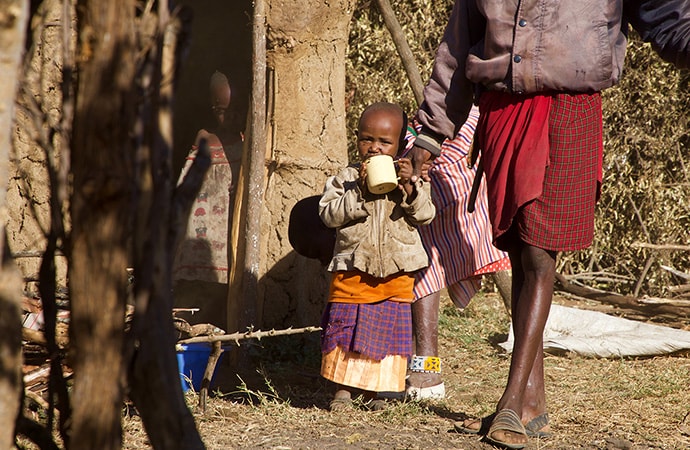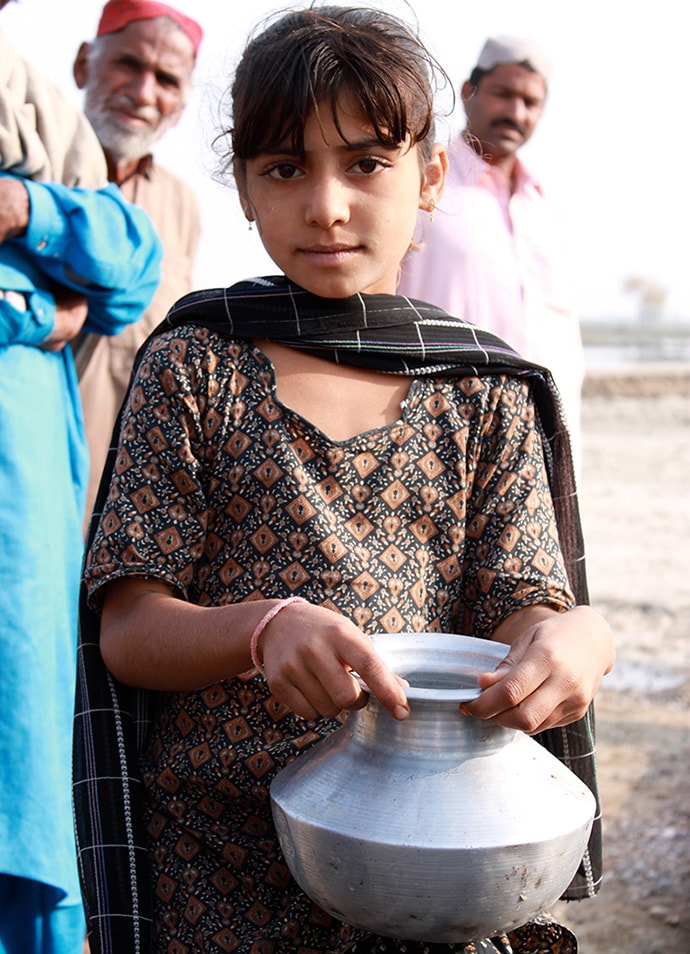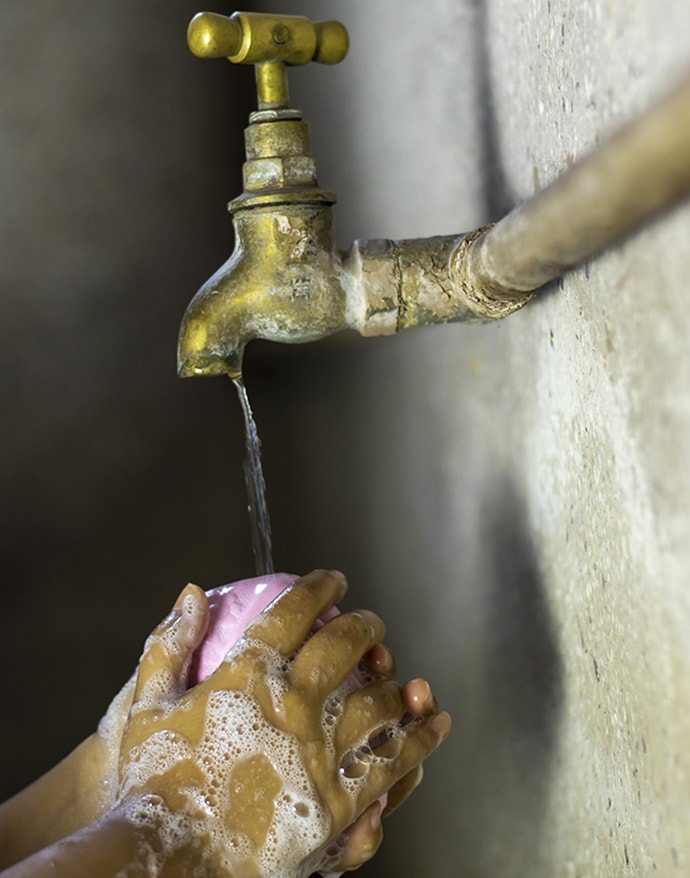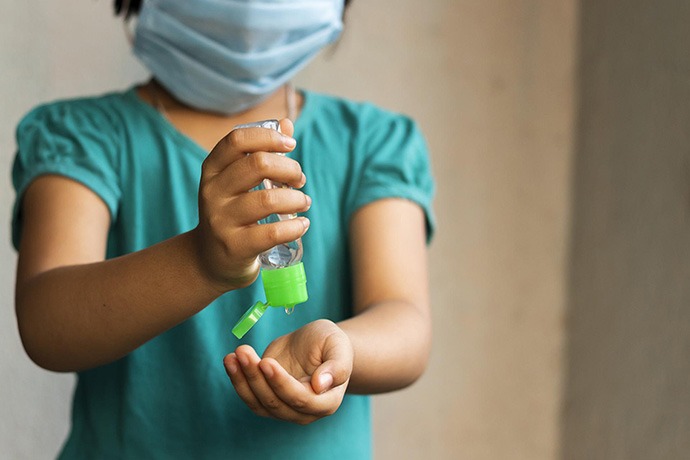For Children, Clean Water Means Everything
By Joanne Lu

Tanzanian child drinking water. Photo: Magdalena kula manchee, Unsplash.
For children, clean water means everything. It means staying healthy from diseases. It means having enough food to eat. It means the opportunity to go to school and improve their futures. Water, for children, means life.
However, according to a 2021 analysis by UNICEF, more than 1.42 billion people around the world, including 450 million children, live in areas of high or extremely high water vulnerability. These are areas where physical water scarcity overlaps with poor water service levels, leaving the communities there to depend on surface water, unimproved sources or water that takes more than 30 minutes to collect. In other words, 1 in 5 children doesn’t have enough water for their daily needs, including drinking and practicing basic hygiene.
“When wells dry-up, children are the ones missing school to fetch water. When droughts diminish food supplies, children suffer from malnutrition and stunting. When floods hit, children fall ill from waterborne illnesses. And when water resources decline, children cannot wash their hands to fight off diseases,” UNICEF Executive Director Henrietta Fore said in a press release.
By some estimates, every 90 seconds a child dies from a water-related disease.
The world’s water crisis, Fore says, is here. Unfortunately, climate change is only making it worse. Dry seasons are lasting longer. Rainy seasons are becoming shorter and more intense, often resulting in destructive floods and other weather disasters that wipe out crops and water systems. Half of the global population could be living in areas facing water scarcity within three years, according to UN estimates. By 2040, a quarter of the world’s children will be living in areas of extremely high water stress.

African children in line for water. Photo: Jeff Ackley, Unsplash.
This intensifying crisis is why many water organizations like Friendly Water for the World are moving away from digging wells and adopting more sustainable options. As aquifers are being drained, people are digging deeper and deeper wells, in some places tapping into dangerous levels of arsenic and fluoride and poisoning entire communities, especially children. Often, wells are abandoned only 2-3 years after they are built because they have broken down or require too much maintenance that the communities cannot afford.
Instead, Friendly Water for the World is building eco-friendly rainwater catchment systems that store as much as five times as much water as average plastic tanks, last 2-3 times as long, and cost 60% less. These tanks are primarily built at schools – as well as some administrative buildings and markets – eliminating the need for students to collect water. One principal says that before the rainwater catchment system was installed at his school, half of the students had to leave during the day to fetch water, interrupting their lessons.
But those children are the lucky ones, who even have the opportunity to attend school. In most countries, the household duty of collecting water falls on women and girls, which deprives them of the time and opportunity to attend school or build livelihoods.
To eliminate that burden, Water1st focuses its efforts on piping water directly to every home, as well as schools, health clinics, and community centers. Not only does it save time, relieve a physical burden, and create opportunities for women to earn income and children to go to school, but it also allows for better hygiene from high-quality toilets, showers, and faucets.
Sustainable Development Goal 6, Water1st notes, seriously raised the bar in terms of defining access to clean water. Basic water services – defined as an improved water source not more than 30 minutes away (round-trip) – fall far short of “safely managed” drinking water services, which are “located on premises, available when needed and free from contamination.”

Child collecting water, Sindh, Pakistan. Photo: Department for International Development (CC BY 2.0)
Save the Children is also focused on bringing change directly into homes. Instead of broad community-centered programs, their flagship Clean Household Approach works at the household level to prevent childhood infections and improve child nutrition, especially in children under age 2. It especially helps caregivers reduce the amount of environmental contaminants that children ingest through better water, sanitation and hygiene (WASH) products and practices, including safe disposal of human feces, safe storage and treatment of drinking water, hygienic handling and safe storage of food, preventing infants and young children from consuming soil and animal feces, and handwashing with soap.
The latter, of course, became a primary concern during the pandemic, which had a profound impact on child welfare. Many of those aspects were discussed during Global Washington’s Annual Goalmakers Conference in December 2021, including both the negative and positive impacts on school WASH programs and water supply. School closures and gathering restrictions, for example, interrupted Splash’s hygiene behavior-change trainings, leading to the improper use of hygiene and sanitation facilities. Once schools re-opened, Splash was able to partner with local governments to make sure schools had soap and uninterrupted water supply for hand-washing stations – services that can and should continue long after COVID-19 no longer dominates public discourse.

Child washing hands at school, India. Photo: soumen82hazra, Pixabay.
WASH services and programs are also essential for preventing the spread of other deadly diseases. In conflict-affected areas, like Yemen, the breakdown of WASH services have led to the deterioration of population health, especially among women and children. There have been several outbreaks of cholera, for example, as well as other infectious diseases, and the country is at risk of a polio resurgence.
In light of these needs, the Yemen Relief and Reconstruction Fund has prioritized water projects, including solar-powered water purification and desalination systems for three hospitals in Hodeidah, the area that has been most-affected by infectious diseases and malnutrition. They are also providing communities with water filters, water tanks, and water-trucking services.

Child, India. Photo: soumen82hazra, Pixabay.
Amid a global rise in protracted conflicts, climate change and depleted water sources, children are most vulnerable to the risks posed by water scarcity and a breakdown in WASH services. However, with innovations in sustainable WASH products and programming, the world still stands a chance to not only curb the crisis, but improve clean water access for children and their families.
The following GlobalWA members are providing clean water and WASH programs in the communities they help in low- and middle-income countries.
Friendly Water for the World doesn’t make the rain fall, cure diseases, build schools, or plant trees. What we do is share ideas and simple technologies for capture and store rainwater, protect families from preventable diseases, make building schools easier, more inexpensively, and more environmentally sound. Perhaps just as critically, we make it possible for communities themselves to choose the technologies and approaches that best fit their needs. In one community of 10 villages, the area leader said that in the 17 years he was there, Friendly Water for the World was the first group that had ever come and asked them what they wanted before starting work, governed by the communities themselves.
We have launched a program in western Kenya to build 60 new rainwater catchment tanks, each holding 25,000 liters. Most tanks are attached to schools formerly without any access to water at all. Currently, many students have to leave their classrooms to gather water for the school, and also for their families. Some end up dropping out altogether to become part of the constant “long walk to water.”
Made of interlocking stabilized-soil bricks, tanks are fabricated onsite with locally available materials. They are not fired using increasingly scarce wood resources, and require no mortar. We’ve trained masons and brickmakers, also making it possible for them to support their families.
Each school and each project has to have a sustainability and maintenance plan written and approved by the community itself.
Rotary District 5030 Clubs have long been active in providing Clean Water, Sanitation and Hygiene Training solutions in developing countries, in both Urban and Rural areas. We currently have 15 projects being implemented in Africa, South and Central America and the Caribbean, with an additional three water projects in draft stage, and four more being authorized. These projects range in size from $30,000 up to $800,000.
One Urban project provided Clean Water, Hygiene Training and improved Sanitation in 31 Government schools in Addis Ababa, Ethiopia supporting over 31,000 students at a cost of over $485,000. This project will eventually be expanded by our partners to over 400,000 students.
Our projects in rural areas include providing Clean Water and/or Sanitation facilities to 14 rural schools in Ethiopia; Clean Water, toilets and hand washing stations at 4 schools serving over 625 students and teachers in rural towns in Guatemala, and a solar powered well for a fistula hospital in Uganda. We are also providing wells and solar powered pumping stations in a Senegal village; handwashing stations for 22 schools in eSwatini; a Water storage and delivery system for a regional hospital in Cameroon ; repairs and improvement to a septic system at a home for children in Mexico; Plumbing and fixtures for an orphanage in Tanzania; and a Reverse Osmosis system for a clinic and families in Haiti .
Save the Children works for a world in which every child affected by an emergency has access to a safe water supply and adequate sanitation facilities. We work towards this vision by: 1) Reducing morbidity and mortality of children exposed to poor WASH conditions; 2) Enhancing hygiene practices in schools; and 3) Designing WASH programming in a way where children are protected against dangerous situations and physical environments.
One of Save the Children’s signature clean water programs is distributing water purification materials and water containers to increase access to safe water in Kenya, Ethiopia, Nigeria, Somalia, and South Sudan. With the support of Procter & Gamble, we’re integrating the distributions into our existing health and nutrition, gender equality, livelihoods, education and humanitarian response work . To learn more about our WASH programming, visit our website.
Water is piped directly to every home, school, health clinic, and community center, assuring each household receives the maximum health benefits of clean water, a toilet, and a shower. Piped water to the home ends the walk for water for women and girls. With the constant burden of water fetching and illness lifted, women can earn an income, families begin to save money, and girls can go to schoo l.
All Water1st projects integrate piped water, toilets, and hygiene education. Studies have consistently shown that together — water, toilets, and hygiene — stop the spread of disease and save lives . When water is piped directly to the home and school, it allows for high-quality toilets and showers. Water faucets are placed in bathroom stalls for flushing, cleaning, and washing hands.
Water1st routinely visits our projects to evaluate and improve our work. Rigorous oversight ensures each project is generating the best possible outcomes. You can be confident your donation is wisely spent and making a real difference in the lives of the people we serve. Considering the industry-wide project failure rate is 35-50% after five years, we know monitoring is a worthwhile investment.
World Concern is committed to improving access to life-sustaining, safe, clean water in areas of greatest need in the world.
Whether building or rehabilitating wells, constructing sand dams, installing rainwater collection systems on homes and community buildings, or providing household water filters that remove 99% of germs, bacteria, and parasites, World Concern is implementing innovative, sustainable methods to ensure children and families are healthy and have safe, disease-free water for life.
Additionally, the cycle of sickness is broken when families understand the importance of using toilets, washing hands, and keeping themselves and their surroundings clean. We help build latrines, provide vital hygiene training and supplies, and deliver handwashing stations to communities in need.
Learn more: https://worldconcern.org/what-we-do/clean-water-health
Yemen Relief and Reconstruction Foundation
Yemen is the poorest countries in the Middle East. The country has experienced multiple conflicts that intensified around 2010, with large protests taking place in 2011, internal fighting in 2012–2014, and a war and blockade that started in 2015 and continue to date. The war and blockade have had a devastating impact on every vital sector in Yemen including public services, agriculture, and health, which faced large-scale destruction and led to significant economic loss and inflation. However, the most affected are water supply, sanitation, irrigation, and agricultural services. This led to the deterioration of population health , especially women’s and children’s health. The Institute for Health Metrics and Evaluation latest Sustainable Development Goals was published for year 2017 and shows that Yemen has a very low score of 32 and is not expected to meet any of the water and sanitation goals. The dire situation of poor water quality and sanitation has led to several outbreaks of cholera and other infectious diseases. The country made progress on polio eradication which is now at risk of resurgence.
In response to the deteriorating water situation in Yemen, Yemen Relief and Reconstruction Foundation (YRRF) prioritized water in its strategic plans . YRRF supports several projects including 1) Water purification and desalination systems using solar energy for three hospitals in Hodeidah, the most affected Governorate by infectious diseases and malnutrition; 2) providing water filters to thousands of people with no access to clean water; 3) providing water tanks and water trucking to areas hosting internally displaced populations; 4) Providing water tanks to people in mountainous areas to allow storage of clean water.
As the war in Yemen continues with little attention, especially who compared to other conflicts in the world, Yemeni children continue to suffer and a generation is at risk of falling behind. It is time to support Yemen by lifting the blockade and starting the internal dialogue for peace without external intervention. Yemenis can and will rebuild their country but need our support and help.